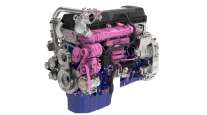Senior Reporter
EPA Hearing Solicits Comments on Three CARB Regulations

[Stay on top of transportation news: Get TTNews in your inbox.]
It was trucking versus the environmentalists, the Moms Clean Air Force, the community leaders, the state environmental directors and a host of others at a recent U.S. Environmental Protection Agency hearing.
The June 29-30 hearing was intended to solicit input to help the agency decide whether to approve a waiver allowing the California Air Resources Board to proceed with three aggressive regulations that have not been well received by many in the trucking industry.
Trucking, though, was badly outnumbered by the more than 100 individuals or group representatives supporting the waiver.

Only a handful of trucking-related groups chose to testify about the three significant CARB rules under the EPA microscope: a tougher nitrogen oxides regulation, an aggressive plan for truck manufacturers to transition today’s trucks to electric vehicles and a plan to expand the length of truck warranties.
The CARB regulations must be approved by EPA, which is working on its own nationwide NOx rule.
Of course, truckers testified that they are every bit as supportive of keeping the air clean as the fervent supporters of the CARB mandates in progress. But truckers faced some headwinds at the hearing as an onslaught of CARB supporters told EPA it’s critical that California, with the worst air quality in the nation, move ahead with its clean air efforts.

Kedzie
Speaking on behalf of American Trucking Associations, Glen Kedzie, vice president of energy and environmental counsel, reminded EPA officials that motor carriers don’t make trucks but are the consumers that buy trucks.
“The Omnibus Low-NOx and Advanced Clean Trucks rules are directed at manufacturers, not at fleets,” Kedzie said. “However, it is trucking companies buying the new technologies that will ultimately determine the success or failure of any emissions regulations.”
ATA’s primary concern involving the requested waivers is that CARB did not provide the requisite four years of lead time under any of the regulations. Clean Air Act sections 209(b) and 202(a) very specifically require regulations provide at least four full model years of lead time before they take effect, along with at least three full model years of stability.
Kedzie said it was the “clear intent of Congress” to ensure manufacturers were afforded enough time to budget and conduct appropriate research to develop and test new technology pathways.
Fleets rely upon such lead time periods to assess and adjust their business plans and budgeting in advance of new rule implementation.
Glen Kedzie, vice president of energy and environmental counsel for American Trucking Associations
“Tangentially, fleets rely upon such lead time periods to assess and adjust their business plans and budgeting in advance of new rule implementation,” he said.
Kedzie also noted that EPA’s harmonized 50-state effort to curb NOx and greenhouse gas emissions is “a more logical, efficient and effective approach in an industry that is not restricted in its operations by state boundary lines.”
Jed Mandel, president of the Truck and Engine Manufacturers Association, also expressed concerns at the hearing about the lead time needed to implement the CARB mandates but said EMA does not quibble with CARB’s right to impose rules on the trucking industry. EMA filed a lawsuit May 27 alleging that the federal Clean Air Act requires that manufacturers be given “four full model years” of lead time before new emissions standards become effective.
Mandel said the minimum lead time is essential “to ensuring the successful implementation of the Clean Air Act objectives.”
“Any delay in addressing this otherwise bureaucratic issue will lead to more uncertainty and chaos in the market for heavy-duty vehicles,” he said.

Greenhaus
Doug Greenhaus, vice president of regulatory affairs for the American Truck Dealers Division of the National Automobile Dealers Association, agreed.
“Congress set out the minimum lead time and stability periods to help ensure that new emissions standards result in vehicles that perform well at prices that customers can afford,” Greenhaus told EPA. “They must lower emissions, but also must be affordable, dependable and fuel-efficient.
“Note that a new heavy-duty vehicle can easily cost more than $100,000, and much more when built using battery or fuel cell technologies or natural gas or hydrogen fuels.”
Dave Cooke, senior vehicles analyst for the Union of Concerned Scientists, said EPA should grant the waivers because they meet all the conditions required for waiver approval.
He disputed that CARB was not giving manufacturers and truckers ample lead time.
“EPA has quite clearly and repeatedly articulated its understanding on this question throughout previous waiver determinations,” Cooke said. “While EPA must consider lead time when evaluating California’s regulations, the lead time inquiry EPA takes relates to technological feasibility.”
LIVE | @ACGlobalEnergy and @CALSTART host a discussion on the role of government policy to enable the deployment of zero-emission medium- and heavy-duty vehicles https://t.co/sWb0xwFHn9 — Liane Randolph (@mslianeran) June 30, 2022
CARB Chair Liane Randolph testified that California has made good progress over the years in reducing pollutants but that much more needs to be done to clean the air.
“Heavy-duty trucks are significant contributors to California’s air pollution problem,” she said.
“This hearing is about improving air quality and addressing climate change, yes,” California Attorney General Rob Bonta told EPA. “It also is about something far more important. I don’t believe I’m overstating it and that it’s hyperbole when I say that the outcome of this hearing will determine whether people live, or whether they die.”
Want more news? Listen to today's daily briefing below or go here for more info:




